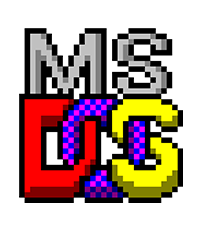System is not suitable for running MS-DOS and Microsoft applications

This page relates to users who are getting errors similar to the above message. Below is an example of the full error message you see when encountering this issue.
C:\Windows\System32\Autoexec.nt The system file is not suitable for running MS-DOS and Microsoft Windows applications. Choose 'Close' to terminate the application.
To restore these files back to their original format, you can expand the files from your Microsoft Windows XP or 2000 restore CD (Compact Disc). If you do not have the Windows restore CD, you can repair the autoexec.nt and config.nt manually from the repair directory.
Restore the autoexec.nt and config.nt files from the repair folder
For users who don't have their Windows XP or 2000 CD or want to try restoring their backup files from their hard drive first, follow the steps below.
- Open the Windows command line.
- In the MS-DOS window, type the following commands.
cd\windows\repair copy autoexec.nt c:\windows\system32 copy config.nt c:\windows\system32
In the above example, we use the "windows" directory. If you are using Microsoft Windows 2000, you must substitute this directory for the "winnt" directory. If you are running Windows XP and get an error when attempting to go into the windows\repair directory, this directory does not exist. Skip to the next section.
- Once the above two files are copied, type exit to exit the MS-DOS window.
After following the instructions above, the issue should be resolved. If the issue continues to occur, try the other suggestions below.
Expand the files from the Windows XP or 2000 CD
The steps below will restore the autoexec.nt, config.nt, and command.com files from the Windows XP CD. To do this, you must have the Microsoft Windows XP CD.
- Insert the Microsoft Windows XP CD into the computer.
- Open the Windows command line
- At the MS-DOS prompt, type the following lines. If completed successfully, a message indicating the file was copied and not an error should appear.
expand D:\i386\autoexec.nt_ c:\windows\system32\autoexec.nt expand D:\i386\config.nt_ c:\windows\system32\config.nt expand D:\i386\command.co_ c:\windows\system32\command.com
In the examples above, we are pointing to the D: drive for the CD-ROM (Compact Disc Read-Only Memory). Some computers with other drive letters may have the CD-ROM drive as a different letter. If this is the case, substitute "D:" with the letter of your CD drive.
Also, in the example above, we use the "windows" directory. If you are using Microsoft Windows 2000, substitute this directory for the "winnt" directory.
See the expand command page for additional help and information about the expand command.
- Once the above files are copied, type exit to close the MS-DOS window.
